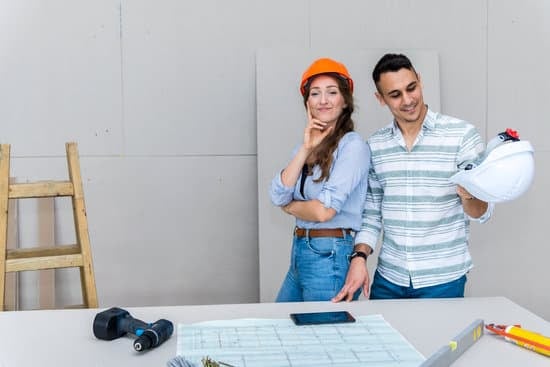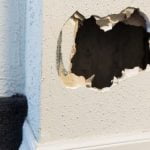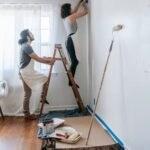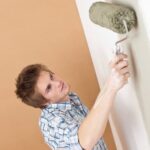The home envelope is a crucial element in maintaining energy efficiency and comfort within your home. In this article, we will explore how to improve the home envelope, starting with understanding what it is and why it matters. A well-sealed home envelope not only helps reduce energy bills but also enhances the overall comfort of your living space.
By identifying common air leaks and drafts, properly insulating your home, choosing the right materials, and considering DIY solutions or professional help, you can significantly improve your home’s envelope. In this section, we will delve into the fundamentals of the home envelope to equip you with the knowledge needed to make informed decisions about improving it.
Understanding the concept of the home envelope is essential for anyone looking to enhance their home’s energy efficiency and comfort levels. The home envelope refers to the physical barriers that separate the interior of your house from its exterior surroundings. This includes walls, roof, windows, doors, insulation, and sealing materials. A well-maintained home envelope can help regulate indoor temperatures and reduce energy consumption.
As we continue our exploration of improving the home envelope in this section, we will uncover the importance of a well-sealed home envelope. A tightly sealed building envelope prevents conditioned air from escaping and unconditioned air from entering your home. This creates a more consistent indoor temperature and reduces the load on heating and cooling systems.
Additionally, a well-sealed home can prevent moisture infiltration, which can lead to mold growth and structural damage. Understanding these benefits will underscore why improving your home’s envelope is worth investing time and resources into.
The Importance of a Well-Sealed Home Envelope
A well-sealed home envelope is crucial for maintaining a comfortable and energy-efficient living space. The home envelope, also known as the building envelope, consists of the exterior walls, roof, foundation, windows, and doors that collectively protect the interior of a home from the outside elements. A properly sealed envelope prevents air leaks and drafts, ultimately reducing energy consumption and lowering utility bills.
Reducing Energy Loss and Improving Comfort
One of the primary reasons to focus on improving your home envelope is to reduce energy loss. Air leaks and poor insulation can lead to higher heating and cooling costs as conditioned air escapes and outside air infiltrates the home. By properly sealing your home envelope, you can create a more comfortable indoor environment while also reducing your carbon footprint.
Preventing Moisture Damage
In addition to reducing energy loss, a well-sealed home envelope helps prevent moisture damage. Water infiltration through poorly sealed areas can lead to mold growth, wood rot, and other structural issues over time. Proper insulation and sealing techniques can mitigate these risks, protecting both your home’s integrity and your family’s health.
Increasing Property Value
An improved home envelope can also increase the overall value of your property. Potential buyers are often attracted to homes with low energy costs and good insulation, making it an investment that pays off in the long run. Whether you plan to stay in your current home for years to come or are considering selling in the future, enhancing your home envelope is a valuable endeavor.
Identifying Common Air Leaks and Drafts in Your Home
As a homeowner, it is crucial to understand the common areas where air leaks and drafts may occur in your home. By identifying these problem areas, you can take the necessary steps to improve your home envelope and make your living space more energy-efficient and comfortable.
One of the most common sources of air leaks and drafts is windows and doors. Over time, the seals around windows and doors can deteriorate, leading to gaps where outside air can seep into your home. Inspect the weatherstripping and caulking around your windows and doors for any signs of wear and tear. Replacing old weatherstripping or adding new caulk can help prevent air leaks and drafts.
Another potential source of air leaks is electrical outlets and switch plates on exterior walls. These small openings in your walls can allow cold air to enter your home, especially during windy weather. Consider installing foam gaskets behind outlet covers to create a tighter seal and prevent unwanted drafts.
In addition to windows, doors, and electrical outlets, other common areas for air leaks include attic hatches, recessed lighting fixtures, and plumbing penetrations. By thoroughly inspecting these areas in your home, you can identify potential sources of drafts and take the necessary steps to improve your home envelope.
Tips for Properly Insulating Your Home Envelope
Properly insulating your home envelope is essential for maintaining a comfortable and energy-efficient home. The home envelope, also known as the building envelope, is the barrier between the interior and exterior of your home. It includes the insulation, air barriers, and moisture control systems that help regulate indoor temperatures and air quality. Here are some tips for properly insulating your home envelope:
- Assess Your Current Insulation: Start by assessing the current insulation in your home. Check for any areas that may be lacking insulation or where it may be damaged or deteriorating.
- Choose the Right Type of Insulation: There are various types of insulation materials available, including fiberglass, cellulose, foam board, and spray foam. Consider factors such as R-value, cost, and compatibility with your home’s structure when choosing the right type of insulation.
- Seal Air Leaks Before Insulating: Before adding new insulation, it’s crucial to seal any air leaks and drafts in your home. Use caulking or weather-stripping to seal gaps around windows, doors, and other openings where air can escape.
Improving your home envelope through proper insulation can lead to significant energy savings and a more comfortable living environment.
It’s important to note that proper installation of insulation is crucial for its effectiveness. If you’re unsure about how to improve your home envelope on your own, consider hiring a professional to ensure that the job is done correctly.
By following these tips for properly insulating your home envelope, you can enjoy a more energy-efficient and comfortable home while reducing your environmental impact.
Choosing the Right Materials for Sealing and Insulation
When it comes to improving the home envelope, choosing the right materials for sealing and insulation is crucial. Properly sealing and insulating your home can make a significant impact on energy efficiency and indoor comfort. Here are some key factors to consider when selecting materials for improving your home envelope.
Consider the Climate
The climate in which you live will have a significant impact on the type of materials you should use for sealing and insulation. For colder climates, materials with higher R-values may be necessary to effectively keep heat inside the home. In warmer climates, materials that provide a barrier against heat transfer from outside may be more important.
Types of Insulation
There are various types of insulation available, each with its own pros and cons. Fiberglass insulation is a popular choice due to its affordability and effectiveness. Cellulose insulation is made from recycled materials and is also a good option for those looking for environmentally friendly choices. Spray foam insulation provides an effective air barrier but may come at a higher cost.
Sealing Materials
In addition to insulation, using the right sealing materials is essential for improving the home envelope. Weatherstripping, caulking, and foam sealants can all help to seal air leaks around doors, windows, and other openings in the home. Choosing high-quality sealing materials will ensure that your efforts to improve the home envelope are successful.
By considering these factors and doing thorough research on the best materials for your specific home and climate, you can effectively improve your home envelope. Whether you choose to hire professionals or take on DIY projects, selecting the right materials will be essential in creating a well-sealed and properly insulated living space.
DIY Solutions for Improving Your Home Envelope
Improving the home envelope is crucial for energy efficiency, comfort, and cost savings. While hiring a professional is always an option, there are also several do-it-yourself (DIY) solutions that can help you improve your home envelope without breaking the bank.
One of the most effective DIY solutions for improving your home envelope is to seal air leaks and drafts. Door and window drafts are common culprits when it comes to energy loss, so using weather-stripping and caulking to seal these areas can make a big difference. Additionally, using spray foam insulation to fill gaps around pipes, wiring, and other penetrations can also help prevent air leaks.
Another DIY solution for improving your home envelope is to add insulation to key areas of your home. This can include adding insulation in the attic, crawlspace, basement, and exterior walls. By properly insulating these areas, you can prevent heat loss in the winter and keep cool air in during the summer.
Lastly, conducting a thorough energy audit of your home can help identify areas that need improvement. You may be able to use DIY solutions such as adding insulated curtains or blinds to windows, installing door sweeps to block drafts at the bottom of doors, or using foam gaskets behind light switches and electrical outlets to reduce air leaks.
| DIY Solution | Impact |
|---|---|
| Sealing air leaks and drafts | Reduces energy loss and improves comfort |
| Adding insulation | Prevents heat loss in winter and keeps cool air in summer |
| Conducting an energy audit | Identifies areas for improvement |
Hiring a Professional
If you have identified air leaks and drafts in your home but are unsure how to properly address them, it may be time to call in a professional. While there are many DIY solutions for improving your home envelope, some issues may require the expertise of a professional. Here are some signs that it’s time to hire a professional to help improve your home envelope:
1. Persistent Drafts: If you have tried DIY solutions such as weather-stripping and caulking but still experience persistent drafts in certain areas of your home, it may be a sign that there are more extensive air leaks that need to be addressed by a professional.
2. High Energy Bills: If your energy bills remain high despite efforts to improve insulation and seal air leaks, it might be time to seek the assistance of a professional. A qualified contractor can conduct an energy audit to identify specific areas where improvements can be made.
3. Complex Insulation Needs: If your home has unique features such as vaulted ceilings, skylights, or an unconventional layout, it may require specialized knowledge and skills to properly insulate these areas without compromising their functionality and aesthetics.
When seeking the help of a professional for improving your home envelope, be sure to do thorough research and ask for references from past clients. Additionally, make sure the contractor is licensed and insured before hiring them for any work on your home.
By knowing when it’s time to call in the experts, you can ensure that any issues with your home envelope are addressed effectively and efficiently, leading to lower energy bills and improved comfort in the long run.
The Benefits of a Well-Improved Home Envelope
A well-improved home envelope offers a range of benefits, including lower energy bills and improved comfort for you and your family. By understanding the importance of a well-sealed home envelope, you can take steps to ensure that your home is as energy-efficient and comfortable as possible.
Properly sealing and insulating your home envelope can lead to significant cost savings on energy bills. According to the U.S. Department of Energy, homeowners can save an average of 15% on heating and cooling costs by properly sealing and insulating their homes. In addition, a well-improved home envelope can also lead to a more consistent temperature throughout your home, eliminating drafts and cold spots.
In addition to lower energy bills, a well-improved home envelope can also lead to improved comfort for you and your family. By reducing drafts and maintaining a consistent indoor temperature, you can enjoy a more comfortable living environment year-round. This is especially important during extreme weather conditions, as a well-insulated home envelope can provide better protection against both cold and hot temperatures.
| Benefits | Details |
|---|---|
| Lower Energy Bills | Proper sealing and insulation can result in an average of 15% savings on heating and cooling costs. |
| Improved Comfort | A well-improved home envelope leads to a more consistent indoor temperature and eliminates drafts and cold spots. |
Maintaining Your Home Envelope
In conclusion, maintaining a well-improved home envelope is crucial for long-term success in reducing energy bills and improving overall comfort in your home. By understanding what the home envelope is and why it matters, homeowners can take proactive steps to identify air leaks and drafts, properly insulate their homes, and choose the right materials for sealing and insulation.
DIY solutions are also available for those who prefer to tackle improvement projects themselves, but there are times when calling in a professional is necessary.
By implementing these tips for improving and maintaining the home envelope, homeowners can see a significant reduction in their energy bills while enjoying a more comfortable living environment. The benefits of a well-improved home envelope are clear: lower energy costs and improved comfort year-round. Whether it’s through DIY solutions or by hiring a professional, taking action to improve the home envelope is an investment that pays off in the long run.
In essence, understanding how to improve the home envelope is not only beneficial for your wallet but also for the environment. By preventing unnecessary energy loss through air leaks and improperly insulated areas of your home, you can reduce your carbon footprint while enjoying a more comfortable living space. With proper maintenance and proactive measures, homeowners can ensure long-term success in maintaining an efficient and well-insulated home envelope.
Frequently Asked Questions
What Is a Highly Efficient Building Envelope?
A highly efficient building envelope refers to the exterior elements of a building that are designed to minimize heat transfer, air leakage, and moisture infiltration. This includes insulation, air barriers, windows, doors, and roofing materials.
What Are the Factors Affecting Building Envelope?
The factors affecting building envelope performance include climate, orientation of the building, design and construction quality, material selection, ventilation systems, and maintenance. These factors can all impact the energy efficiency and overall effectiveness of the building envelope.
Can Improvements in the Building Envelope Reduce the HVAC System Size?
Yes, improvements in the building envelope can reduce the size of HVAC systems needed for heating and cooling. By minimizing heat loss or gain through the envelope, less energy is required to maintain a comfortable indoor temperature. This can result in significant cost savings and reduced energy consumption.

I’m thrilled to have you here as a part of the Remodeling Top community. This is where my journey as an architect and remodeling enthusiast intersects with your passion for transforming houses into dream homes.





